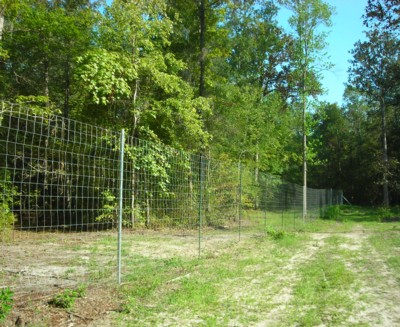Whitetail Hunting & Management Question
“We have a 200 acre tract of land and are interested in whitetail deer hunting and management. The property is located in Menard County and we just completed high fencing the perimeter. The property has good surface water that consists of several tanks as well as s creek that seems to be spring fed. Basically, we are willing to do what it takes from the standpoint of providing deer with supplemental feed when necessary.
The question we have is how many whitetail deer should we have on 200 acres in the Hill Country? What is the deer carrying capacity for the property? We feel the habitat on the property is good for deer since it’s mostly made up of live oak, juniper and a variety of other brush plants and surface water is readily available. Any advice or recommendations with regards to whitetail management and hunting on such a property is appreciated.”
Deer Management on Small High Fenced Ranches
The first thing you have to realize is that you are now fully responsible for the deer within that high fenced ranch. The health of the deer herd and the habitat found on the property now rest completely within your hands. I feel that the number of deer that you want on the property is likely substantially different than the actual carrying capacity of the property. Much of the Hill Country is fairly poor with regards to browse plants for white-tailed deer, mostly because of historic over browsing.
I can not speak specifically about your property in Menard County, but in general the ideal density for whitetail in your part of the world varies from 1 deer for every 8 to 14 acres. It sounds like you have a good amount of cover on the property, so my guess is that the right number for you is probably around 1 per 10 acres, or say 20 deer on the entire 200 acre tract.
You mentioned that supplemental feeding would take place as necessary. It’s important to point out that supplemental feeding should be purely supplemental or the habitat on the property will be degraded. Research has found that deer provided with free-choice supplemental sources of protein still consume a high amount of native vegetation, which includes both browse (woody plants) and forbs (herbaceous weeds).
Since we are talking about a small high fenced property, my recommendation would be to keep the buck to doe ratio at 1:1 or just slightly more bucks than does. Even with equal sex ratios, if when the property has a really good fawn production year you will likely have a pre-hunting season population that is 8-10 animals over the carrying capacity of the land. Then it’s up to you to achieve the proper harvest or you run the risk of putting the habitat and deer found there in jeopardy. Make sure to shoot does to keep the population in the right range.
A couple years of under-harvest or lack of harvest, for whatever reason, and things could get out out of control from a management standpoint. High fenced deer management on 200 acres is kind of like managing a fish bowl, and there is not a lot of room for error. There is no doubt that humans can grow deer in pens with food and water, but if you are seriously interested in managing a high fenced property then it will take accurate surveys, diligent whitetail hunting to achieve harvest goals and a lot of time. Install two free-choice feeders protein feeders and maintain no more than 20 animals and things should stay in good shape.
